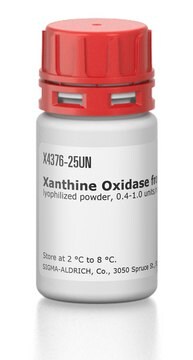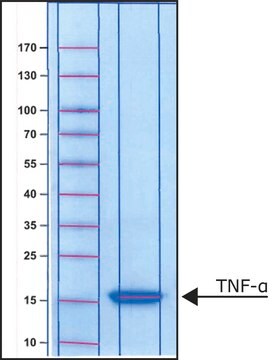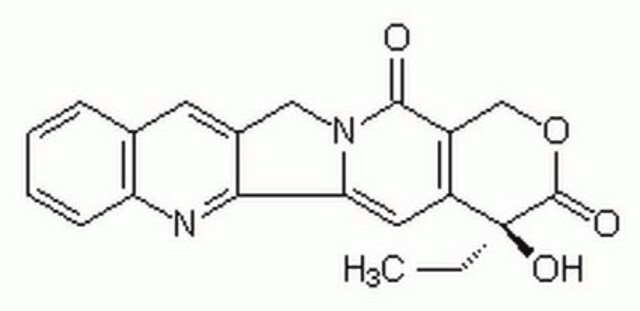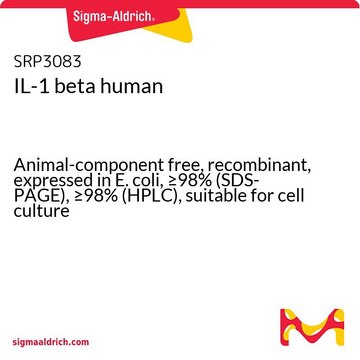T7799
Tumor Necrosis Factor-β human
>95% (SDS-PAGE), recombinant, expressed in E. coli, powder, suitable for cell culture | mammalian: suitable
Synonym(s):
TNF-β
About This Item
Recommended Products
Product Name
Tumor Necrosis Factor-β human, TNF-β, recombinant, expressed in E. coli, powder, suitable for cell culture
biological source
human
Quality Level
recombinant
expressed in E. coli
assay
>95% (SDS-PAGE)
form
powder
potency
4-20 pg/mL Activity
quality
endotoxin tested
mol wt
protein 18.8 kDa
packaging
pkg of 10 μg
storage condition
avoid repeated freeze/thaw cycles
technique(s)
cell culture | mammalian: suitable
impurities
≤1 EU/μg
UniProt accession no.
storage temp.
−20°C
Gene Information
human ... LTA(4049) , TNFSF13B(10673)
Biochem/physiol Actions
Physical form
Analysis Note
Storage Class
11 - Combustible Solids
wgk_germany
WGK 3
flash_point_f
Not applicable
flash_point_c
Not applicable
ppe
Eyeshields, Gloves, type N95 (US)
Choose from one of the most recent versions:
Already Own This Product?
Find documentation for the products that you have recently purchased in the Document Library.
Our team of scientists has experience in all areas of research including Life Science, Material Science, Chemical Synthesis, Chromatography, Analytical and many others.
Contact Technical Service







